How Korea Perfected Sleepy Eyelid Surgery: A Look at the Adjustable Ptosis Technique
2025-08-24
If you're struggling with droopy, "sleepy" eyelids, you're likely looking for a solution that is both effective and predictable.
The goal of any ptosis (sleepy eyelid) surgery is to achieve a precise and natural-looking eyelid height. However, for decades, this has been one of the biggest challenges in plastic surgery.
In this article, Dr. Park will explain the problem with traditional methods and introduce an innovative technique Noonopi have developed—the Adjustable Levator Advancement—to provide a gentler, more systematic, and highly predictable way to correct sleepy eyelids.
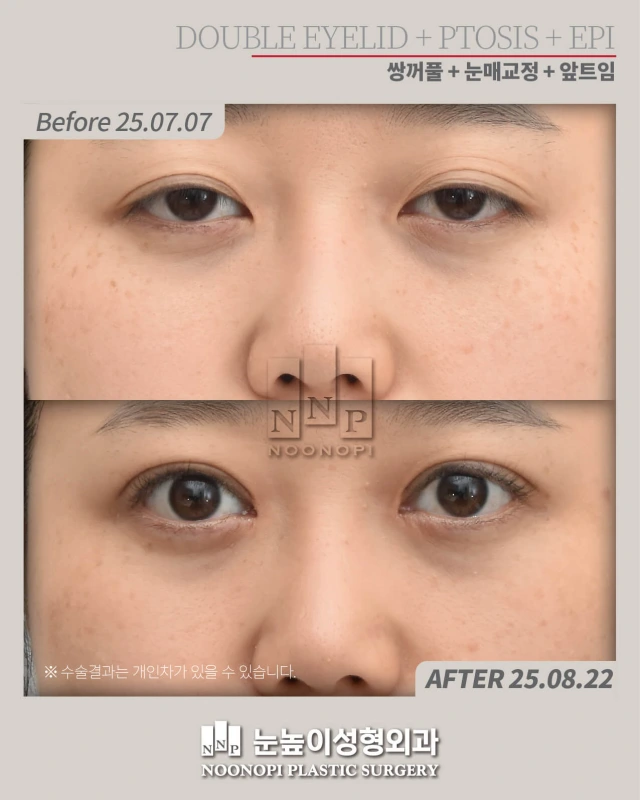
The Classic Challenge: Why Is Correcting Droopy Eyelids So Difficult?

For years, surgeons have relied on a "one-size-fits-all" formula: for every 1 millimeter the eyelid droops, the surgeon should tighten the main eyelid-lifting muscle (the levator muscle) by 4 millimeters.
The problem? This formula often doesn't work perfectly in real life.
Every patient's anatomy is unique. This makes it difficult for surgeons to get the eyelid height exactly right on the first try. To fix this, they have to make adjustments during the operation. The traditional way of doing this involves:
- Placing a stitch to tighten the muscle.
- Checking the eyelid height.
- If it's not right, removing the stitch completely.
- Creating new holes in the delicate eyelid cartilage (the tarsal plate) to place another stitch.
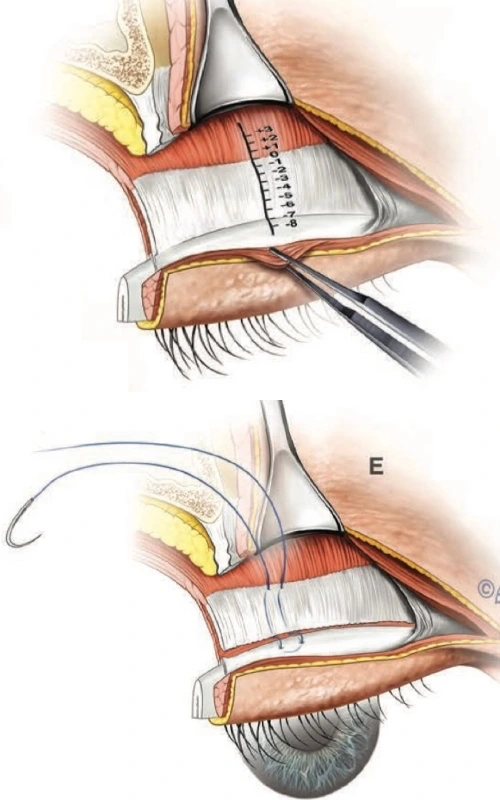
This process is repeated until the height is acceptable. This repeated puncturing can damage the fragile cartilage called tarsus, leading to a longer recovery and less stable long-term results. We knew there had to be a better way.
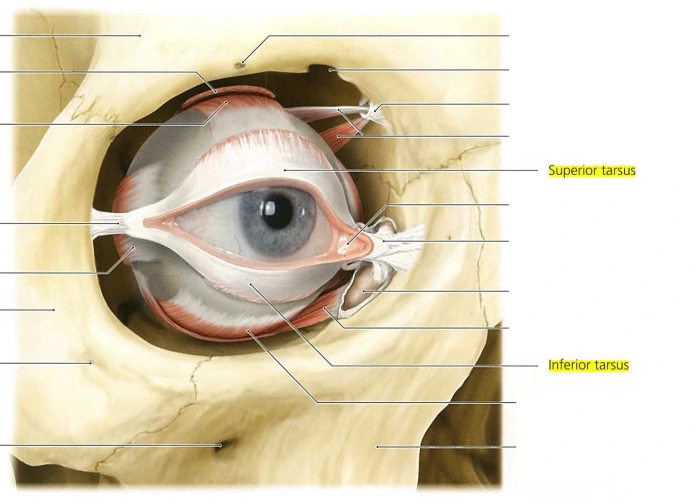
The Solution: A Gentler, More Precise Approach
In Noonopi Plastic Surgery, the "Adjustable Levator Advancement," was designed to solve these two key problems: unpredictability and unnecessary trauma.
Instead of repeatedly puncturing the eyelid cartilage, our technique uses a single, initial anchor point. This one stitch acts as a fixed reference, allowing for incredibly fine-tuned adjustments without causing any further damage to the eyelid structure.
It transforms the surgery from a series of educated guesses into a systematic, precise calibration.
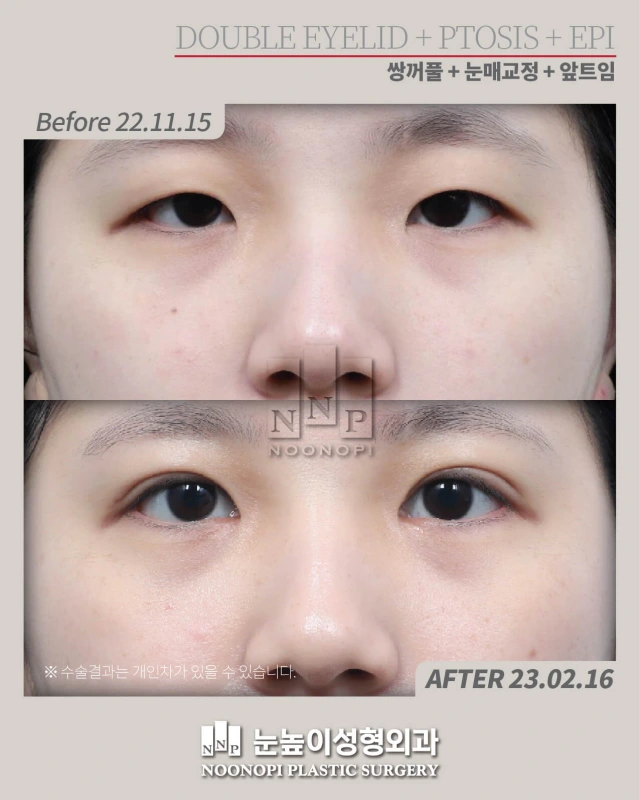
A Step-by-Step Look at Your Sleepy Eyelid Surgery
So, how does this advanced sleepy eyelid surgery work in practice? Here is a detailed, step-by-step explanation of the Adjustable Levator Advancement technique.
Step 1: The Foundation – The Single Anchor Stitch
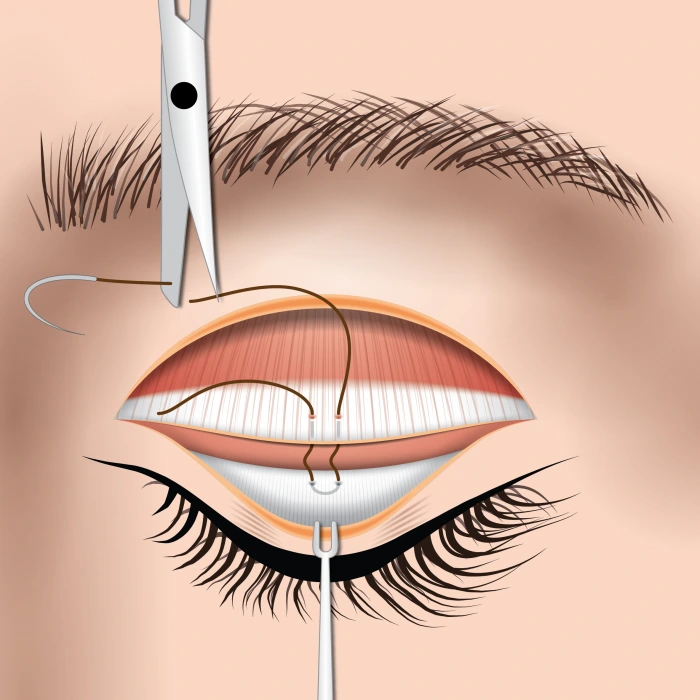
After the initial preparation, we place the first, crucial stitch. A very fine suture is passed through the main eyelid-lifting muscle and then anchored once to the firm, cartilage-like plate (the tarsus) that gives your eyelid its shape. This single pass is the only time we ever need to touch the cartilage. This preserves its strength and integrity.
Step 2: "Zeroing In" – Finding Your Perfect Starting Point
With the first temporary stitch in place, we will gently ask you to open your eyes. This gives us our first look at the new eyelid height. This initial position is our "zeroing" reference point. We mark its exact location on the lifting muscle with a surgical marker.
This real-time feedback is far more reliable than any textbook formula. It tells us exactly how your unique muscle and tissue are responding.
See the process of ptosis eyelid surgery
Step 3: Fine-Tuning the Result – The Art of Fine Adjustment
If the eyelid needs to be higher or lower, the adjustment process begins. This is where our new innovative technique happens.
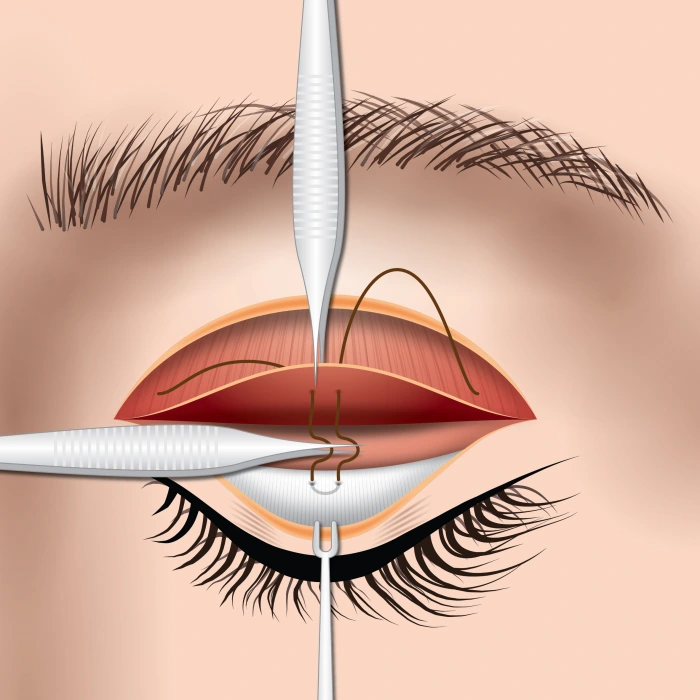
Instead of making new holes, we simply release the temporary knot.
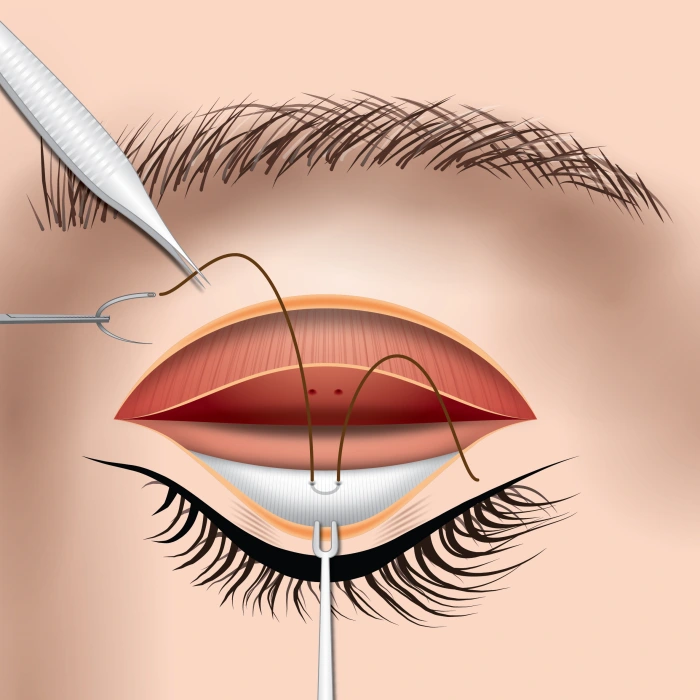
The suture thread is then inserted to needle to reposition the stitch on the muscle side.
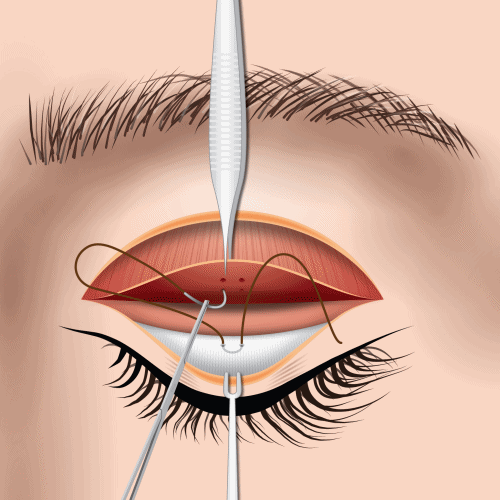
- To lift the eyelid higher: We move the stitch to a point above the initial mark on the muscle.
- To lower the eyelid slightly: We move the stitch to a point below the mark.
We can repeat this fine-tuning process as many times as needed to achieve the perfect eyelid height and a beautiful, natural arch—all without ever damaging the tarsus again.
This adjustable technique, developed by Dr. Park, is currently being prepared for publication in a medical journal.
Step 4: Final Confirmation and Securing the Result
Once we have achieved the ideal, symmetrical result that complements your facial features, the temporary knot is replaced with permanent knots, securing the muscle in its new, optimal position.
The photo below shows a case of ptosis surgery performed using this technique, which allows fine-tuning.
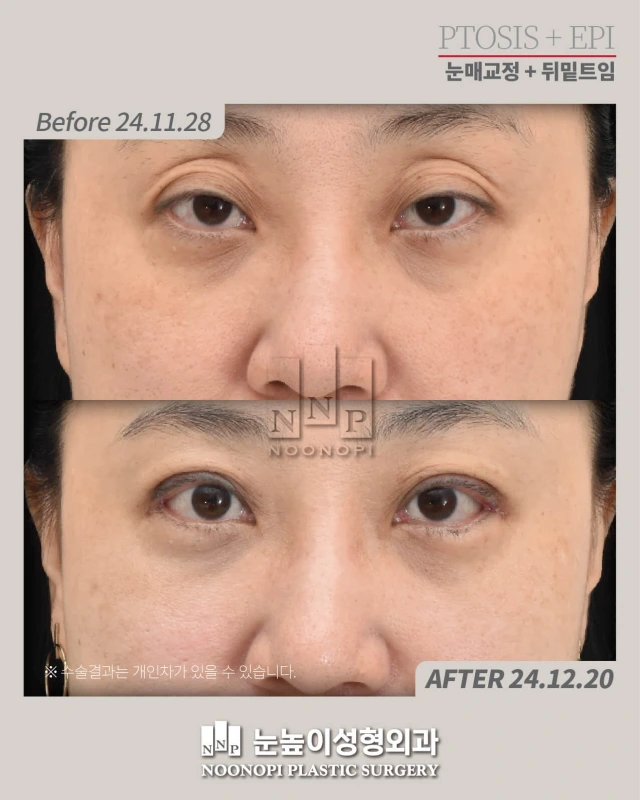
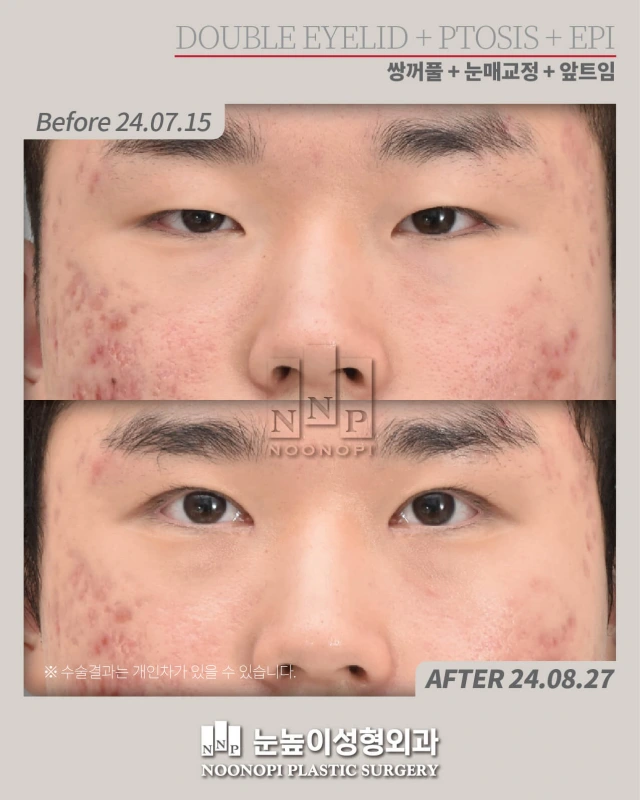
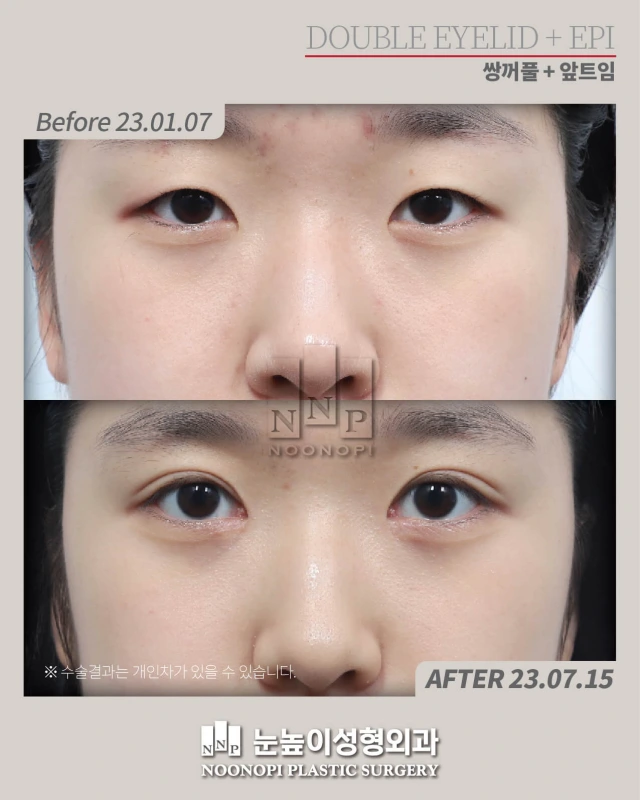
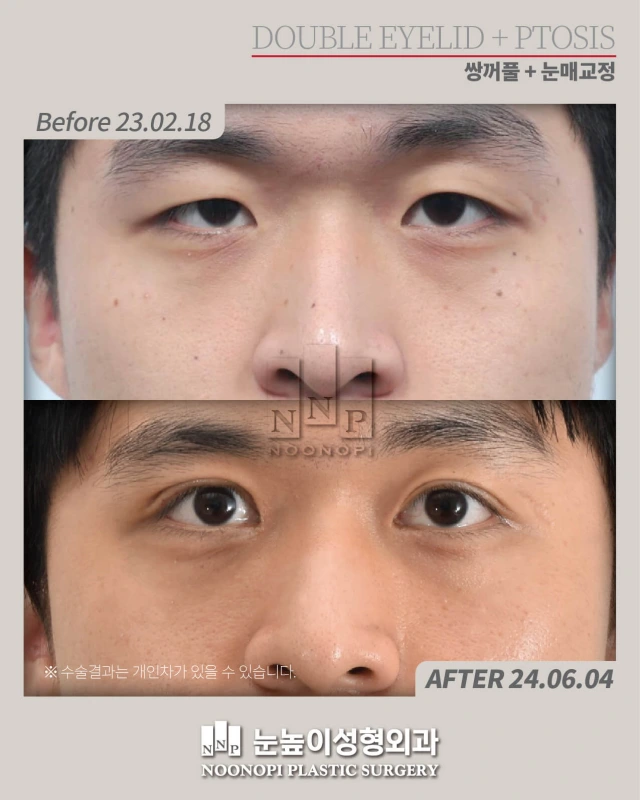
Why This Advanced Technique Matters for You
The Adjustable Levator Advancement technique is more than just a technical refinement; it offers significant benefits for anyone undergoing sleepy eyelid surgery:
- Preserves Eyelid Health: By avoiding repeated trauma to the eyelid cartilage, the risk of long-term structural weakness is minimized.
- Greater Precision: The "zeroing" method allows for a level of accuracy that is difficult to achieve with traditional techniques.
- More Predictable, Natural Results: This systematic approach leads to more consistent and reliable outcomes, reducing the need for revision surgeries.
- Potentially Smoother Recovery: Less trauma to the tissue can contribute to a more comfortable healing process.
In conclusion, this technique elevates the standard of care for ptosis surgery. It replaces an imprecise and traumatic process with a method that is anatomically respectful, systematic, and highly predictable. By choosing an experienced surgeon who utilizes such advanced methods, you are investing in a safer and more reliable outcome for your Korea eyelid surgery.
If you have any questions, please feel free to contact us via 🔗WhatsApp for a consultation!

